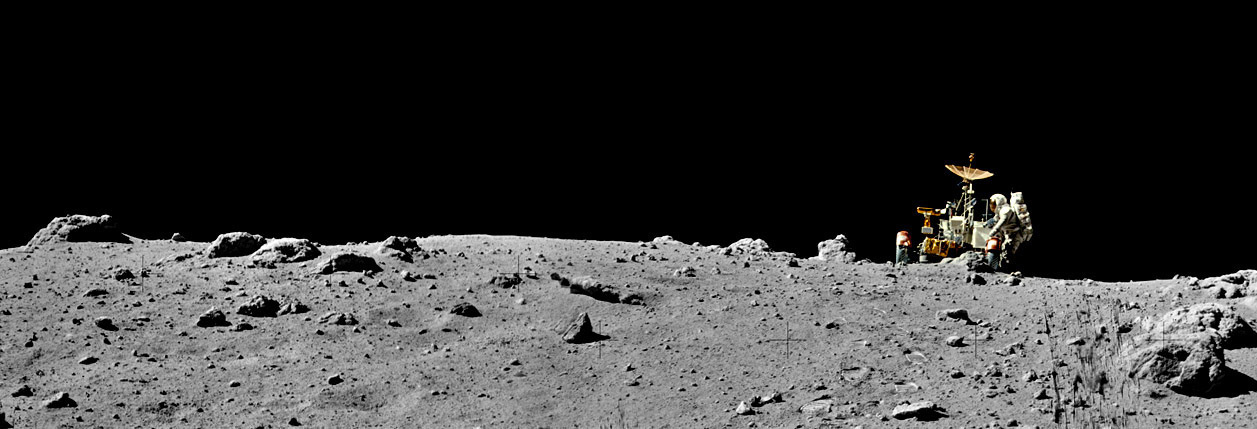March 7, 2022
Bumpy Road
Originally published April 21, 2012

Apollo 16 rover on the rim of North Ray crater, surrounded by boulders ejected from the crater; from Lunar & Planetary Institute
40 years ago today the lunar module Orion touched down at the Descartes Highlands. John Young and Charlie Duke spent nearly three days on the surface, travelling 27 km in their lunar rover (the only class of lunar vehicles lacking astronaut-given names), and collecting 96 kg of rocks that destroyed the existing interpretation of the area. The Descartes site was selected to sample rocks older than those of the maria previously visited, and the rocks of the light-hued and smooth Cayley Formation and the furrowed Descartes Mountains, both of which were interpreted to be volcanic material different from mare basalts. No volcanic material was collected anywhere - the rocks were largely fragmental impact debris and impact melt, believed to be basin ejecta, largely from Imbrium and maybe Nectaris. The Descartes Mountains are morphologically unique on the Moon so it is hard to argue that typical highlands were sampled. And there were no exposures of certifiably ancient rocks so the goal of finding rocks different than what had been sampled before was frustrated. In fact, the geologic significance and provenance of the Apollo 16 samples are least well understood of any of the Apollo or Luna samples. This does not take anything away from John and Charlle, who performed excellently as field geologists, almost immediately recognizing that the volcanic interpretations were wrong. And it isn't a criticism of the lunar scientists who have always, even now, had insufficient data to answer fundamental questions. It is amazing how much we learned from Apollo and yet how much we still don't know.
Chuck Wood
Yesterday's LPOD: A New Selenosphere
Tomorrow's LPOD: Spiky Moon
COMMENTS?
Register, Log in, and join in the comments.



